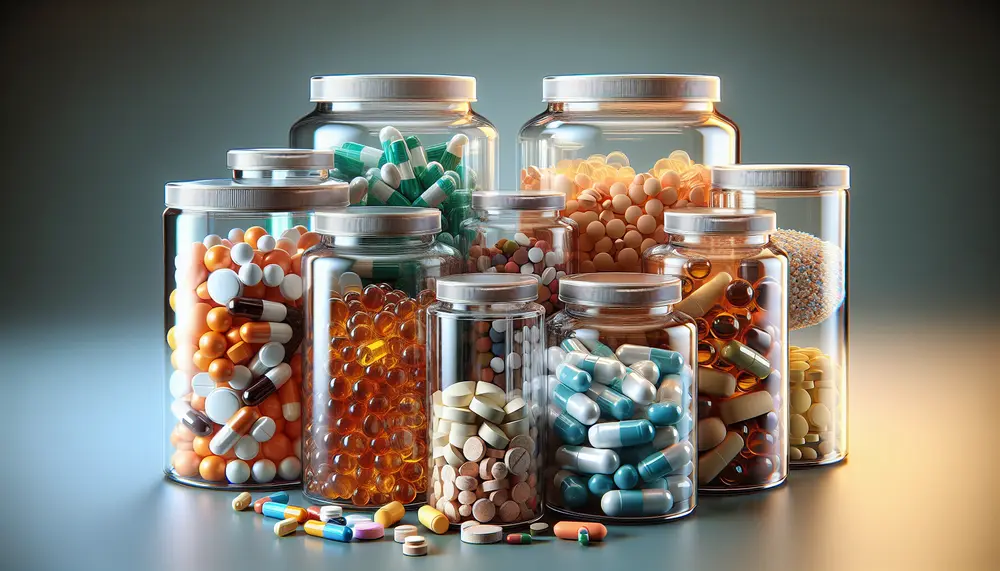Table of Contents:
Introduction
Packaging is a critical aspect of the pharmaceutical industry. It ensures the safety, efficacy, and shelf-life of medications. Among various materials, glass stands out as a preferred choice for pharmaceutical packaging. This article will delve into the reasons behind this preference, exploring the numerous benefits of using glass in this vital sector.
Understanding these benefits can help both professionals and beginners in the field make informed decisions. Whether you are involved in production, quality control, or regulatory aspects of pharmaceuticals, knowing why glass is often chosen can enhance your perspective and approach.
Why Glass is the Preferred Material for Pharmaceutical Packaging
Glass has long been a trusted material in pharmaceutical packaging. Its unique properties make it an ideal choice for safeguarding medications. Below, we explore some of the primary reasons why glass is favored over other materials.
Purity and Inertness
Glass does not react with most substances, ensuring that the medication remains pure and uncontaminated. This chemical inertness is crucial for maintaining the integrity of pharmaceutical products.
Barrier Properties
Glass provides an excellent barrier against gases and moisture, which can degrade medications. This makes it suitable for packaging sensitive drugs that require stable conditions.
Non-porous Surface
The non-porous surface of glass prevents the absorption of liquids and gases. This characteristic further ensures that the contents remain unaffected by external factors.
Recyclability
Glass is 100% recyclable, making it an environmentally friendly option. Recycling glass reduces waste and conserves natural resources, aligning with sustainable practices in the pharmaceutical industry.
Aesthetic Appeal
Glass packaging often looks more professional and high-quality compared to plastic alternatives. This aesthetic appeal can enhance brand perception and consumer trust.
The combination of these factors makes glass an outstanding choice for pharmaceutical packaging, ensuring safety, stability, and sustainability.
Advantages and Disadvantages of Packaging Pharmaceuticals in Glass
| Aspect | Pros | Cons |
|---|---|---|
| Purity and Inertness | Does not react with most substances, maintaining medication purity. | Heavier compared to plastic, increasing shipping costs. |
| Barrier Properties | Excellent barrier against gases and moisture, preserving medication integrity. | Fragile and prone to breaking, posing risks during handling and transport. |
| Recyclability | 100% recyclable, environmentally friendly. | Recycling process requires energy and resources. |
| Aesthetic Appeal | Professional and high-quality appearance, enhancing brand perception. | Higher production costs compared to plastic packaging. |
| Temperature Resistance | Withstands high and low temperatures, essential for sterilization and storage. | Certain types (e.g., borosilicate) may be more expensive. |
Chemical Stability and Inertness of Glass
One of the most significant advantages of using glass in pharmaceutical packaging is its chemical stability and inertness. These properties are crucial for maintaining the efficacy and safety of medications.
Chemical Inertness
Glass is chemically inert, meaning it does not react with most substances. This inertness ensures that the medication inside remains uncontaminated by the packaging material. Unlike plastics, which can leach chemicals into the drug, glass maintains the purity of its contents.
Resistance to Corrosion
Glass resists corrosion from both acidic and alkaline substances. This makes it an ideal choice for a wide range of pharmaceuticals, including those with reactive ingredients. Even over long periods, glass maintains its integrity, ensuring that the medication is safe for consumption.
Types of Pharmaceutical Glass
Different types of glass are used in pharmaceutical packaging to suit various needs:
- Type I (Borosilicate Glass): Highly resistant to thermal shock and chemical attack. Ideal for injectable drugs.
- Type II (Treated Soda-Lime Glass): Surface-treated to improve chemical resistance. Often used for intravenous solutions.
- Type III (Soda-Lime Glass): Suitable for non-parenteral products like oral medications and topical treatments.
Sterility and Cleanliness
The non-porous surface of glass prevents the absorption of liquids and gases, which can harbor bacteria or other contaminants. This quality ensures that medications remain sterile and safe for use.
The chemical stability and inertness of glass make it an unparalleled choice for pharmaceutical packaging. It guarantees that the medication remains effective and uncontaminated throughout its shelf life.
Temperature Resistance of Glass Packaging
Glass packaging is renowned for its excellent temperature resistance, making it a versatile material for pharmaceutical applications. This feature ensures that medications remain stable and effective under various temperature conditions.
High-Temperature Tolerance
Glass can withstand high temperatures without deforming or degrading. This makes it suitable for processes such as sterilization, which often involve extreme heat. For instance, borosilicate glass, commonly used in pharmaceutical packaging, has a melting point of approximately 1,510°C (2,750°F).
Cold Resistance
In addition to high-temperature tolerance, glass also performs well at low temperatures. This is essential for storing medications that require refrigeration or freezing. Glass maintains its structural integrity even at temperatures as low as -80°C (-112°F).
Thermal Shock Resistance
Certain types of pharmaceutical glass, such as borosilicate glass, are designed to resist thermal shock. Thermal shock occurs when a material experiences a rapid change in temperature. Glass with high thermal shock resistance can handle these sudden changes without cracking or breaking.
Applications in Pharmaceutical Processes
The temperature resistance of glass packaging is particularly beneficial in several pharmaceutical processes:
- Sterilization: High-temperature sterilization processes ensure that the packaging and its contents are free from contaminants.
- Autoclaving: Glass containers can be autoclaved to sterilize medications and medical equipment.
- Lyophilization (Freeze-Drying): Glass vials are commonly used in freeze-drying processes to preserve sensitive drugs.
The temperature resistance of glass packaging ensures that it can endure the rigorous conditions required in pharmaceutical manufacturing and storage. This characteristic helps maintain the safety and efficacy of medications throughout their lifecycle.
Light Protection with Amber Glass
Amber glass is widely used in pharmaceutical packaging to protect light-sensitive medications. This type of glass offers a unique advantage by filtering out harmful light wavelengths that can degrade the contents.
Blocking Harmful UV Rays
Amber glass effectively blocks ultraviolet (UV) rays, which can cause chemical reactions in certain medications. By preventing UV exposure, amber glass helps maintain the stability and potency of the drug.
Protection from Visible Light
In addition to UV rays, amber glass also reduces the transmission of visible light. This further ensures that light-sensitive pharmaceuticals remain unaffected by external light sources. For example, vitamins and certain antibiotics can degrade when exposed to visible light.
Applications of Amber Glass
The use of amber glass is particularly beneficial for the following types of pharmaceutical products:
- Injectable Medications: Many injectable drugs are sensitive to light and require protection to maintain their efficacy.
- Liquid Formulations: Syrups and other liquid medications benefit from the light-blocking properties of amber glass.
- Nutraceuticals: Vitamins and supplements often use amber glass to preserve their active ingredients.
Scientific Basis for Light Protection
The effectiveness of amber glass in blocking harmful light is supported by its spectral transmission properties. It typically allows less than 10% of UV light (
FAQ about Pharmaceutical Glass Packaging
Why is glass preferred for pharmaceutical packaging?
Glass is preferred for pharmaceutical packaging due to its chemical stability, inertness, and excellent barrier properties against gases and moisture. It does not react with most substances, ensuring that medications remain pure and uncontaminated.
What are the main types of glass used in pharmaceutical packaging?
The main types of glass used in pharmaceutical packaging include Type I (Borosilicate Glass), Type II (Treated Soda-Lime Glass), and Type III (Soda-Lime Glass). Each type offers specific properties suited for different pharmaceutical applications.
How does glass packaging protect medications from light?
Amber glass is often used in pharmaceutical packaging to protect light-sensitive medications. It effectively blocks harmful ultraviolet (UV) rays and reduces the transmission of visible light, thereby maintaining the stability and potency of the drug.
What environmental benefits does glass packaging offer?
Glass packaging is 100% recyclable, non-toxic, and energy-efficient in production. It reduces plastic waste and supports sustainable practices within the pharmaceutical industry, contributing to a circular economy model.
What quality control measures are in place for glass pharmaceutical packaging?
Stringent quality control measures are implemented at every stage of glass container production. This includes material inspection, production monitoring, mold maintenance, post-production testing, sterility assurance, and thorough documentation to ensure safety and compliance.






